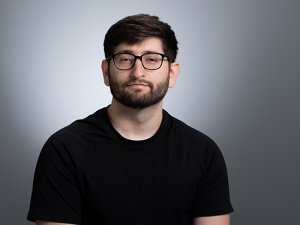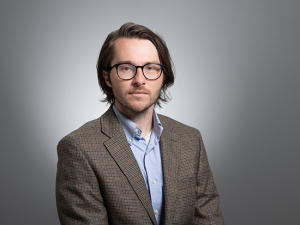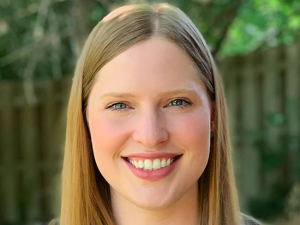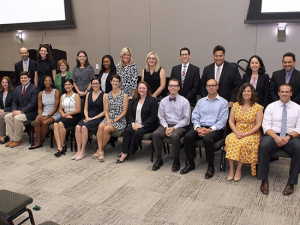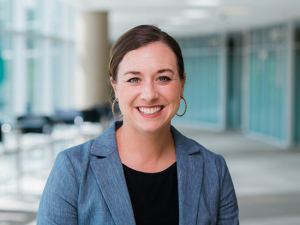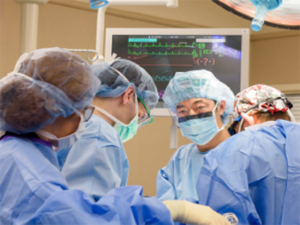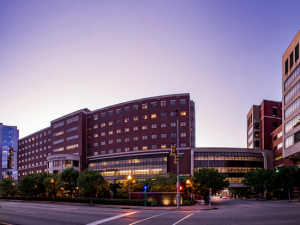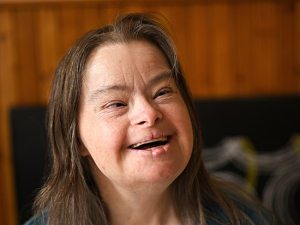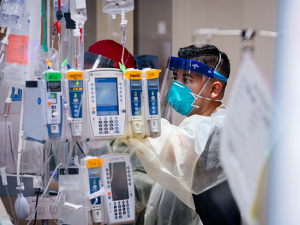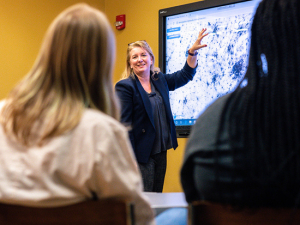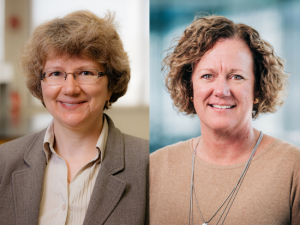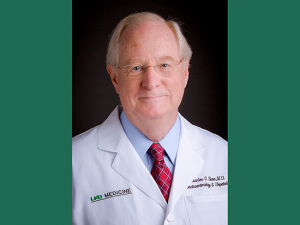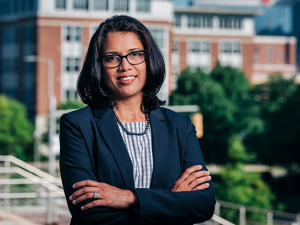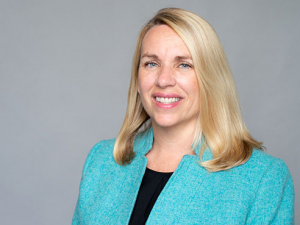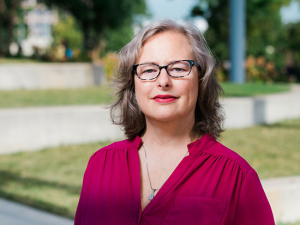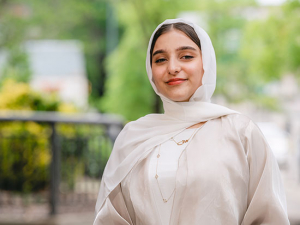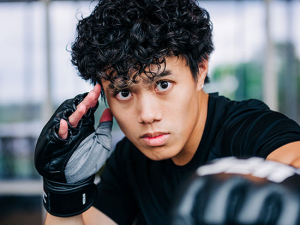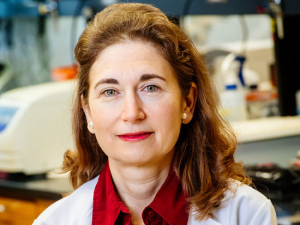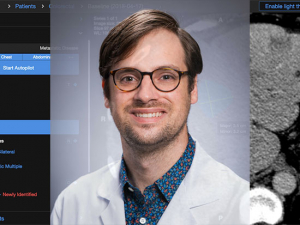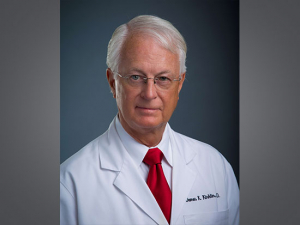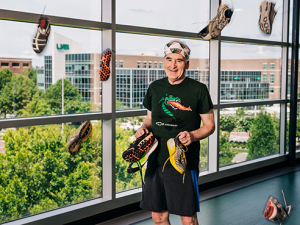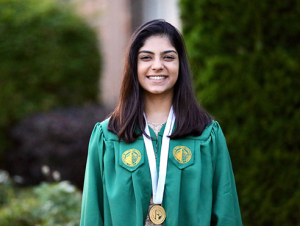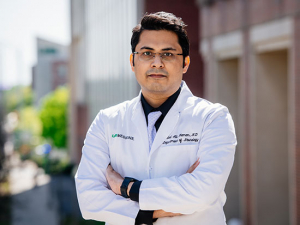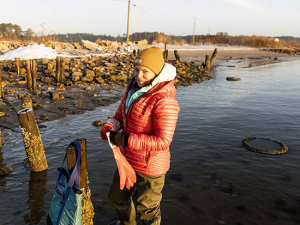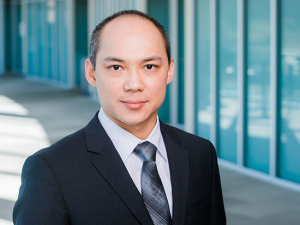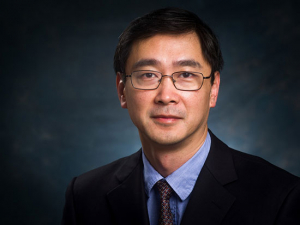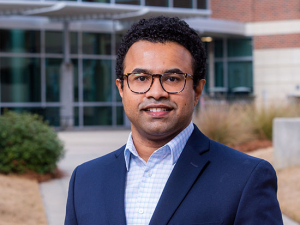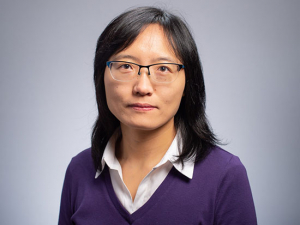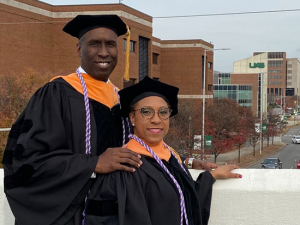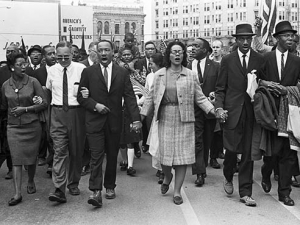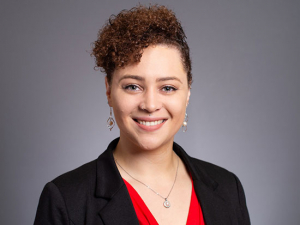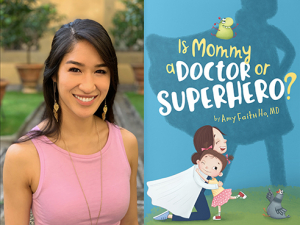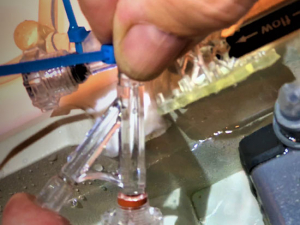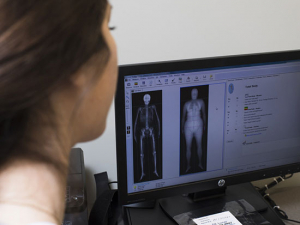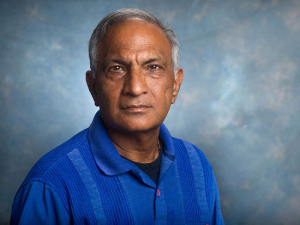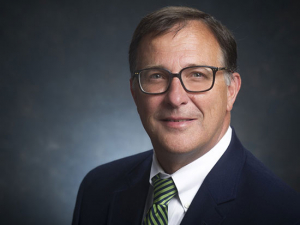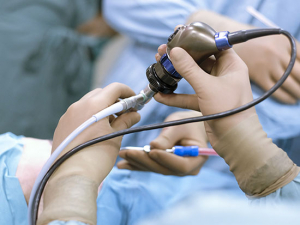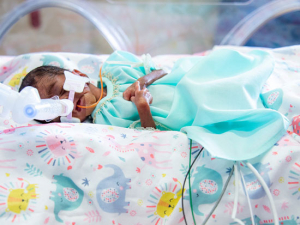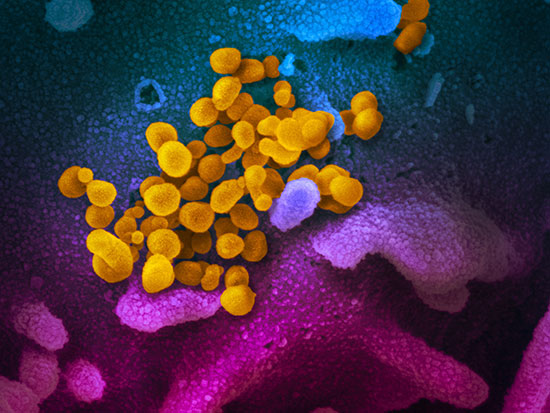 This scanning electron microscope image shows SARS-CoV-2 (yellow), the virus that causes COVID-19, emerging from the surface of cells (blue/pink) cultured in the lab. A novel detergent-like compound developed by UAB researchers could block SARS-CoV-2 from entering cells in the first place. Image courtesy National Institute of Allergy and Infectious Diseases-Rocky Mountain Laboratories, NIHThis summer, UAB’s Harbert Institute for Innovation and Entrepreneurship awarded more than $300,000 to faculty and staff with ideas for new products and processes that needed proof-of-concept or early-stage product development support to reach their commercialization potential. Eleven projects received funding of between $10,000 and $50,000, made possible by the Regional Innovation Strategies program from the U.S. Economic Development Administration.
This scanning electron microscope image shows SARS-CoV-2 (yellow), the virus that causes COVID-19, emerging from the surface of cells (blue/pink) cultured in the lab. A novel detergent-like compound developed by UAB researchers could block SARS-CoV-2 from entering cells in the first place. Image courtesy National Institute of Allergy and Infectious Diseases-Rocky Mountain Laboratories, NIHThis summer, UAB’s Harbert Institute for Innovation and Entrepreneurship awarded more than $300,000 to faculty and staff with ideas for new products and processes that needed proof-of-concept or early-stage product development support to reach their commercialization potential. Eleven projects received funding of between $10,000 and $50,000, made possible by the Regional Innovation Strategies program from the U.S. Economic Development Administration.
What are these projects, and who are the inventors behind them? The Reporter met with several grant recipients to learn more about their ideas and their advice to colleagues considering commercialization opportunities of their own.
This week’s project is Therapeutics Targeting COVID-19 Entry Into Cells, led by Professor Emeritus Gattadahalli M. Anantharamaiah, Ph.D., of the Division of Geriatrics, Gerontology and Palliative Care, along with Professor Emeritus Roger White, Ph.D., research associate Paul Wolkowicz, Ph.D., and Professor Suzanne Oparil, M.D., all of the Division of Cardiovascular Disease.
|
“There was a quick realization of the scope of the problem, the strong potential for the commercialization of our potential solution and the ‘we’ve got nothing to lose in running down an off-the-wall hypothesis’ attitude central to getting such stuff done.” |
Most current and proposed treatments for COVID-19 focus on proteins produced by SARS-CoV-2, the virus that causes the disease. But in order for SARS-CoV-2 to make proteins it must first infiltrate human host cells. A novel detergent-like compound developed by UAB researchers that blocks HIV and HSV viruses from entering cells by disrupting their protective membranes could have the same effect against SARS-CoV-2, they hypothesize. The compound, known as 4F, is an amphipathic peptide, which means that it is a small molecule with both water-loving (hydrophilic) and fatty acid-loving (lipophilic) properties. These characteristics allow it to travel through the bloodstream and bind to the fatty acid-based membrane of a virus, causing the membrane to dissolve. The compound has been shown to be safe in Phase I clinical trials. Further modifications may produce an even more targeted and effective drug candidate for COVID-19, the researchers believe.
With the Regional Innovation Strategies grant funding, the team will Identify the best candidate anti-COVID-19 peptide during a six-month study period.
Where did your idea come from?
The project developed from the confluence of several unrelated events, Anantharamaiah said. “First of course is the appearance of the SARS-CoV2 virus itself. Without its dastardly impetus our team would not have considered novel approaches to destroy pathogenic viruses” — and researchers already working in the field “would never have considered the novel hypotheses of unconnected outsiders,” he said.
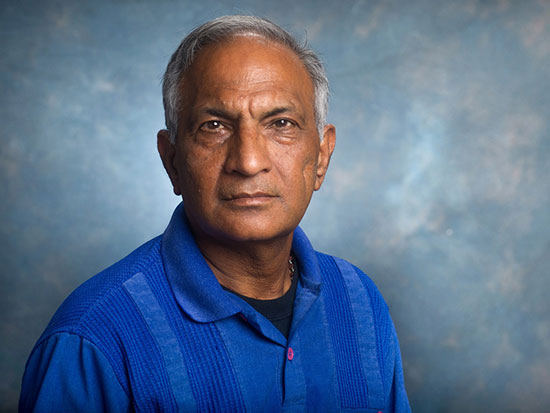 G.M. Anantharamaiah, Ph.D.Anantharamaiah and his longtime research associate Mayakonda ‘Pal’ Palgunachari “had over 30 years’ experience in synthesizing and characterizing the family of molecules from which our leads derive,” Anantharamaiah said. With the teamwork of Oparil, Wolkowicz and White, Anantharamaiah “had on hand or could readily synthesize all the lead molecules our team needed to test and sculpt its hypothesis,” he added. “For them, as for all of us, there was a quick realization of the scope of the problem, the strong potential for the commercialization of our potential solution and the ‘we’ve got nothing to lose in running down an off-the-wall hypothesis’ attitude central to getting such stuff done…. Whether it is in fact an idea worth pursuing and commercializing will be determined by the reality of our idea and the SARS-CoV-2 virus itself; the target is the final arbiter of its own destruction.”
G.M. Anantharamaiah, Ph.D.Anantharamaiah and his longtime research associate Mayakonda ‘Pal’ Palgunachari “had over 30 years’ experience in synthesizing and characterizing the family of molecules from which our leads derive,” Anantharamaiah said. With the teamwork of Oparil, Wolkowicz and White, Anantharamaiah “had on hand or could readily synthesize all the lead molecules our team needed to test and sculpt its hypothesis,” he added. “For them, as for all of us, there was a quick realization of the scope of the problem, the strong potential for the commercialization of our potential solution and the ‘we’ve got nothing to lose in running down an off-the-wall hypothesis’ attitude central to getting such stuff done…. Whether it is in fact an idea worth pursuing and commercializing will be determined by the reality of our idea and the SARS-CoV-2 virus itself; the target is the final arbiter of its own destruction.”
What problem does it solve?
“Our lead drugs will prevent or resolve COVID-19 infection. Because of their unique mechanism of action, we expect them to target other pathogenic viruses.”
How long have you been thinking about this idea?
“This idea is something that arose in late March and April of 2020, when the scope of the COVID medical and economic problem became apparent and we non-virologists understood the actual physical nature of these SARS-CoV-2 viral particles. The potential of our novel therapeutics as broad anti-virals was not obvious at that time, but became so later on.”
What factors convinced you to move forward into commercialization?
“First, the pressing nature of the COVID-19 problem; there is no time for the pursuit of learned academic questions or peer-reviewed funding. We needed short-term money to acquire proof-of-concept data.
“Second, the large market size for this type of drug and the lack of effective anti-viral therapeutics against most viral diseases except HIV and HCV indicated a good lead would be a well-received and well-rewarded breakthrough. Further, venture or pharma funds might be more amenable to a seed-funding round of our disruptive approach to a major problem.
“Finally, there is extensive background information available on our lead compounds. We had a strong index of suspicion that a good lead was near at hand, so we were confident of a short-ish runway to commercialization. We shall see if any of these suppositions are true.”
Is this the first time you have worked with the HIIE?
“HIIE has helped me in patenting several aspects of my research. [In 2019, Anantharamaiah was named to the National Academy of Inventors.] The institute also provided some research funds to me and the team, which has helped us. HIIE’s encouragement has been one of the key factors in this saga of developing antiviral agents.”
Do you have any advice for others in the UAB community who may have an innovative or entrepreneurial project in mind?
“If you are in science, learn the rudiments of start-ups, business and the business mind-set. The latter is not an adventurous or a cooperative one, but you must deal with it while fighting in the commercialization arena. This learning can be done through various courses at UAB or by personal reading and/or attending meetings like SEBIO…. The most important advice is to dream big and fight hard. Remember what Thomas Edison said, ‘Many of life's failures are people who did not realize how close they were to success when they gave up.’ Succeed or fail, you’ll have a great story to tell. Finally, while girding to fail and fail and fail again, never doubt that you will learn and succeed.”
